Figuring out where to place the bigger appliances in your home can be tricky sometimes. Do you want to move your fridge onto the carpet but don't know whether or not that's a good idea? Well, we've done some digging and have the answer waiting here for you. Let's get into it.
In general, you don't want to let a refrigerator sit on the carpet. Considering that a fridge needs proper ventilation to function, having your appliance sit on top of the carpeting can lead to overheating, leaks, and even permanent damage. That said, it's best to place a refrigerator over flooring that is level, like tile or wood, so try to keep that in mind.
As we begin, we will cover all things refrigerator placement and discuss how to keep your appliance running smoothly. Whether you want to purchase a second fridge for your home or redecorate, we're here to offer plenty of help. With that said, let's dive right into this topic!

Where Is The Best Place To Put A Refrigerator?
You want to place a refrigerator somewhere flat with good ventilation on all sides. Most times, you will see a fridge go into the kitchen next to a countertop or close to another appliance, although the exact placement comes down to your preference.
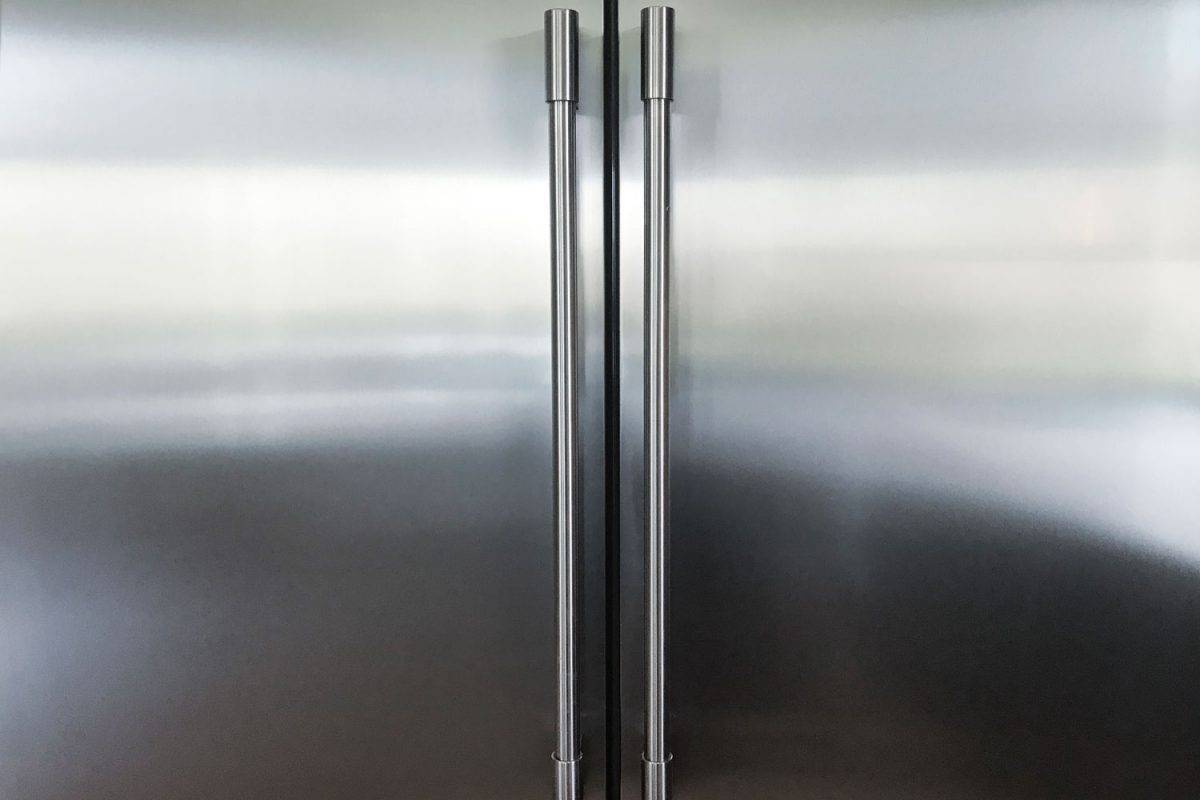
Like we said, having your fridge be on the carpet can cause it to overheat, leak, or even become permanently damaged, so it's best to put yours somewhere carpet-free, like on wood or tile.
Again, every kitchen and home will have a different layout, so there isn't one correct way to do this.
Can You Put A Fridge Anywhere In The House?
In general, as long as the space you want to put your fridge has plumbing, you should be fine to place it there. As we covered above, the kitchen tends to be the easiest choice for refrigerator placement, although it isn't the only option.
Especially if you have a second refrigerator or mini-fridge you want to relocate, the garage or even a spare room/home office might be good places to go. You could also try placing your refrigerator in the living room if you don't mind the extra noise and exhaust, so there are plenty of options.
How Much Space Does A Refrigerator Need?
In terms of spacing for your refrigerator, try to give it around two inches in the back, one inch from any upper cabinets, and 1/8 inch on either side. Doing this will allow your refrigerator to ventilate properly and keep it from overheating.
On top of that, we recommend giving your fridge enough space from other warm appliances, like the oven or dishwasher, so try to be mindful of their spacing as well.
We say this because when heat from the oven or dishwasher releases near your fridge, this causes it to warm up, forcing it to work overtime to keep the food inside cold, which isn't very efficient long-term.
Can You Elevate A Refrigerator?
Yes! You can certainly elevate a refrigerator if you want to. Most times, manufacturers recommend adjusting a refrigerator's rollers/legs so the appliance is slightly higher in the front, which helps keep its doors from shifting or becoming uneven.
Furthermore, you can also try adjusting all of the rollers/legs on your fridge to lift your appliance off the ground for ventilation, which is a great way to keep it running efficiently. Of course, this doesn't need to be more than a half-inch, so there's no need to leave more space than that.
Does A Fridge Produce Heat?
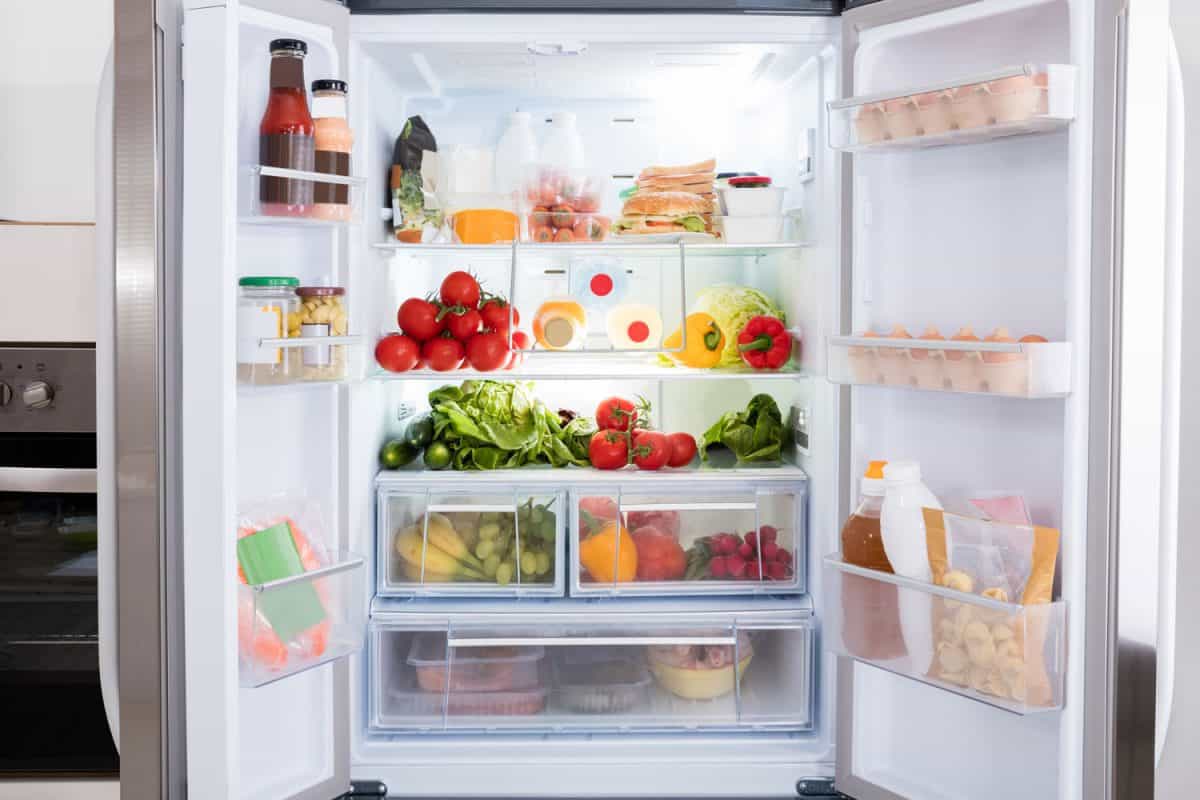
Yes, a refrigerator will produce heat as it cools the food inside it. You can usually feel a bit of warm air blowing out from underneath a fridge as it runs, hence why you want to give it enough space.
With that said, some brands like Samsung install heat dissipation pipes on both outer walls of their refrigerators to help with excess warmth, so it won't always come from the bottom of your appliance.
Should A Refrigerator Feel Hot?
Although it is pretty standard for a refrigerator to get warm while it's running, your appliance shouldn't ever feel hot.
Considering that most fridges will release excess heat from underneath, you won't be able to feel this unless you're at the base of your appliance, so if you're noticing warm doors or sides of your refrigerator, there could be something wrong.
This could be due to insufficient spacing between your fridge and appliances/walls around it, or even your flooring, so you might want to try moving your refrigerator if overheating persists.
Can A Fridge Overheat?
Yes, a refrigerator can become overheated. As we mentioned earlier, a fridge may start to overheat if it doesn't have good ventilation, so placement can impact this.
Overheating can also happen if a refrigerator has a faulty compressor or blocked condenser fan/coils, so this may be something mechanical. On top of that, your refrigerator could even have low coolant levels, which will cause overheating, so there are plenty of reasons this happens.
Do Refrigerators Catch On Fire?
Although it doesn't often cross our minds, a refrigerator can catch on fire in certain conditions. Most commonly, an overheated compressor will lead to a fire inside your fridge, which can become extremely dangerous.
An electrical short may also start a refrigerator fire as well as a light inside your appliance staying on 24/7, so this can happen unexpectedly. That said, if you notice any unusual sounds or your refrigerator overheating often, we recommend reaching out to a professional as soon as possible.
What Can I Put Underneath My Fridge To Protect The Floor?
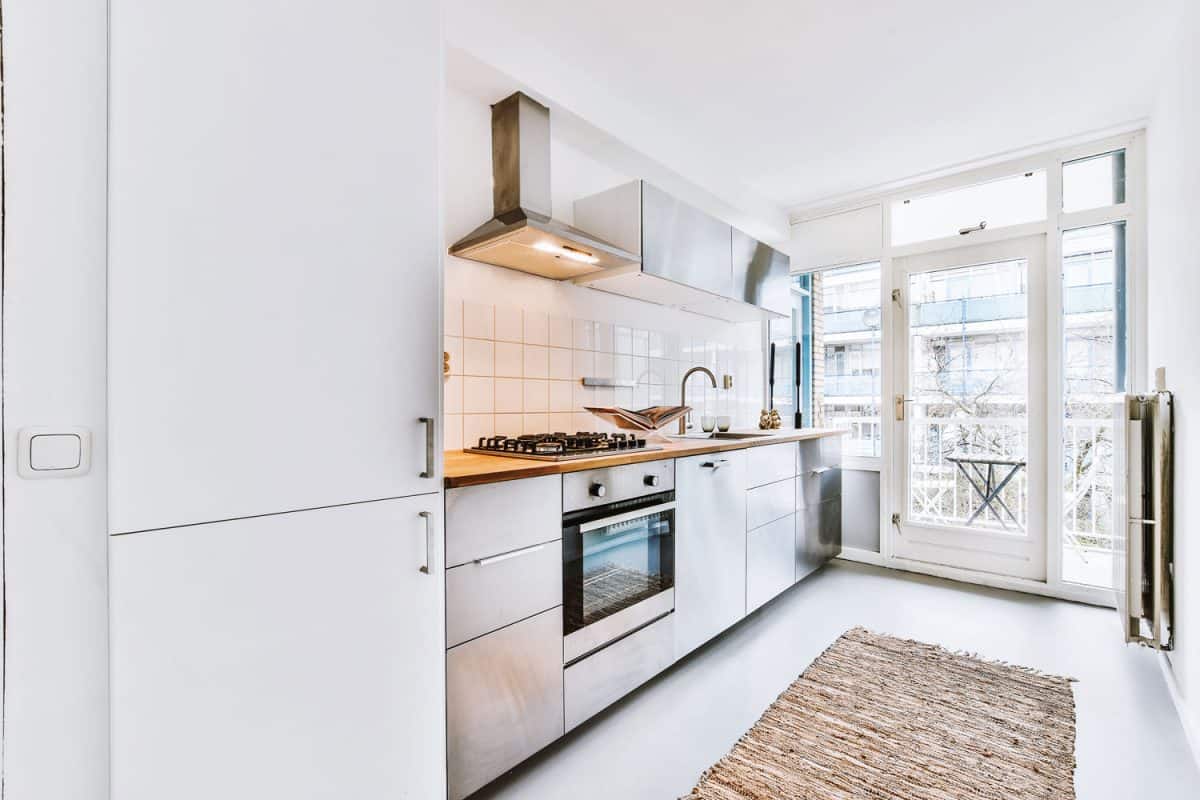
For those wanting to protect their flooring, there are things you can try placing underneath a fridge to prevent damage. Most times, a sturdy rubber floor mat will be sufficient for underneath a refrigerator and shouldn't cost more than 50$, which makes it a great option.
You can also try using thinner plastic floor protectors or spare flooring panels underneath a fridge to keep your floors damage-free, so there are many ways to do this. Again, you don't want to use anything too thick as it could affect your refrigerator's venting, so the thinner, the better.
Can You Put Sliders Under A Refrigerator?
If you need to move your fridge or protect your flooring, you can certainly try using sliders. Think of sliders as a solid cushioning between your fridge and wood/tile floor, which should allow easier movement without scratching or damage.
That said, sliders are a bit more noticeable than a rubber floor mat underneath your fridge, so if you prefer something more hidden, we don't recommend them.
What Is The Tray Under The Fridge For?
The tray underneath a refrigerator is there to catch condensation from your appliance. Think of this as more of a drip tray for your fridge, which water will fall into and eventually evaporate.
Most times, this excess moisture will form after your refrigerator defrosts, so if your freezer has built-up ice near its drain, expect a bit more water in the tray underneath your fridge.
Again, this shouldn't be enough to cause water to pool underneath your appliance, but it is possible.
Do I Need To Empty My Fridge's Drip Tray?
No, you shouldn't need to empty the drip tray underneath your refrigerator. As we said, the water that falls into it should be able to evaporate by the time more moisture forms, so this shouldn't affect you at all.
That said, it is a good idea to regularly clean the drip tray under your refrigerator to prevent any mold or odors from forming, so that's something to keep in mind. Again, this doesn't need to be more than every 3-6 months, so don't worry about getting down there too frequently.
To Wrap It Up
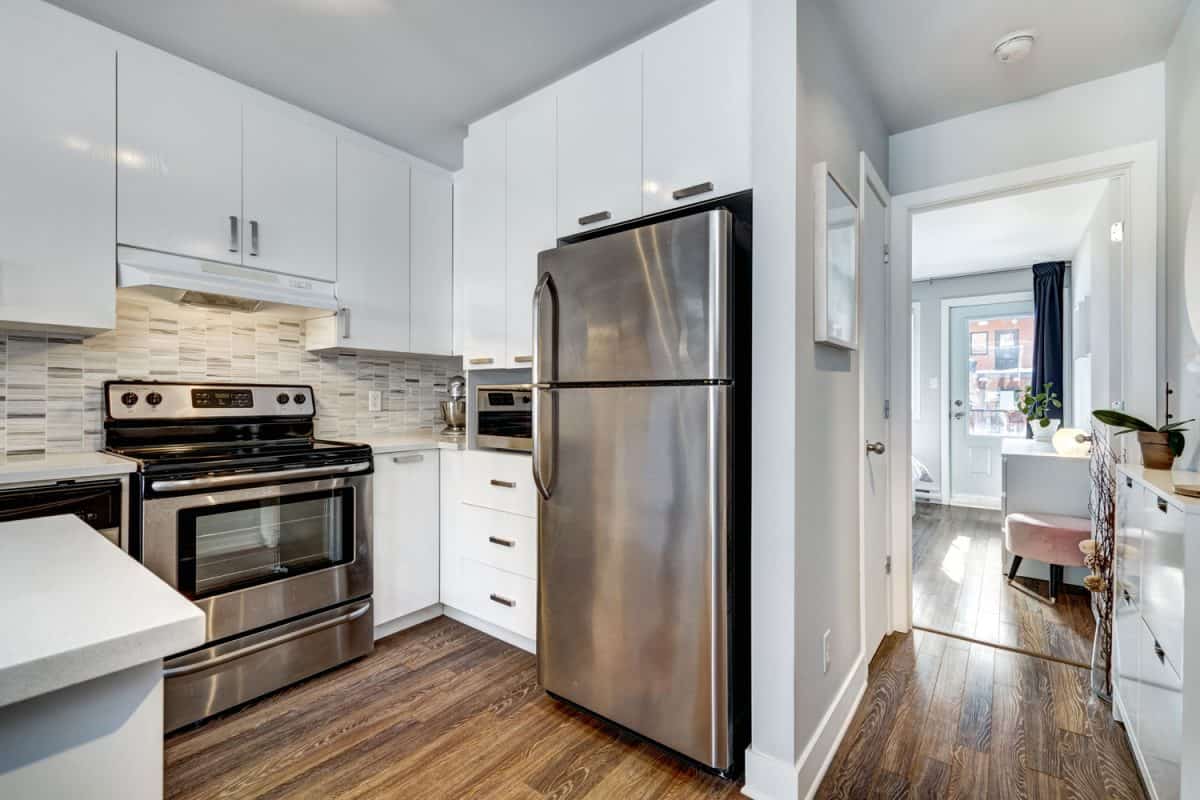
Whether you have a refrigerator, you need to relocate, or want to get a second appliance, knowing where to put it can be tricky. From what we found, a fridge should not sit on the carpet, but rather on level, hard floors like tile or hardwood.
You also want to make sure to give your refrigerator space for venting on all sides to keep it from overheating. On top of that, you can try adjusting the legs/rollers on your fridge to have it higher in the front to prevent loose or uneven doors, so that's something to consider.
Regardless, keep an eye on your fridge, and if you notice any unusual sounds or frequent overheating, reach out to a professional ASAP.
Made it to the end? Check out these helpful related kitchen posts down below!
How Long Before You Can Use A New Refrigerator?
How Old Is My Refrigerator? Here's How To Find Out!
Does A Refrigerator Need A Water Line? [And How To Install One]

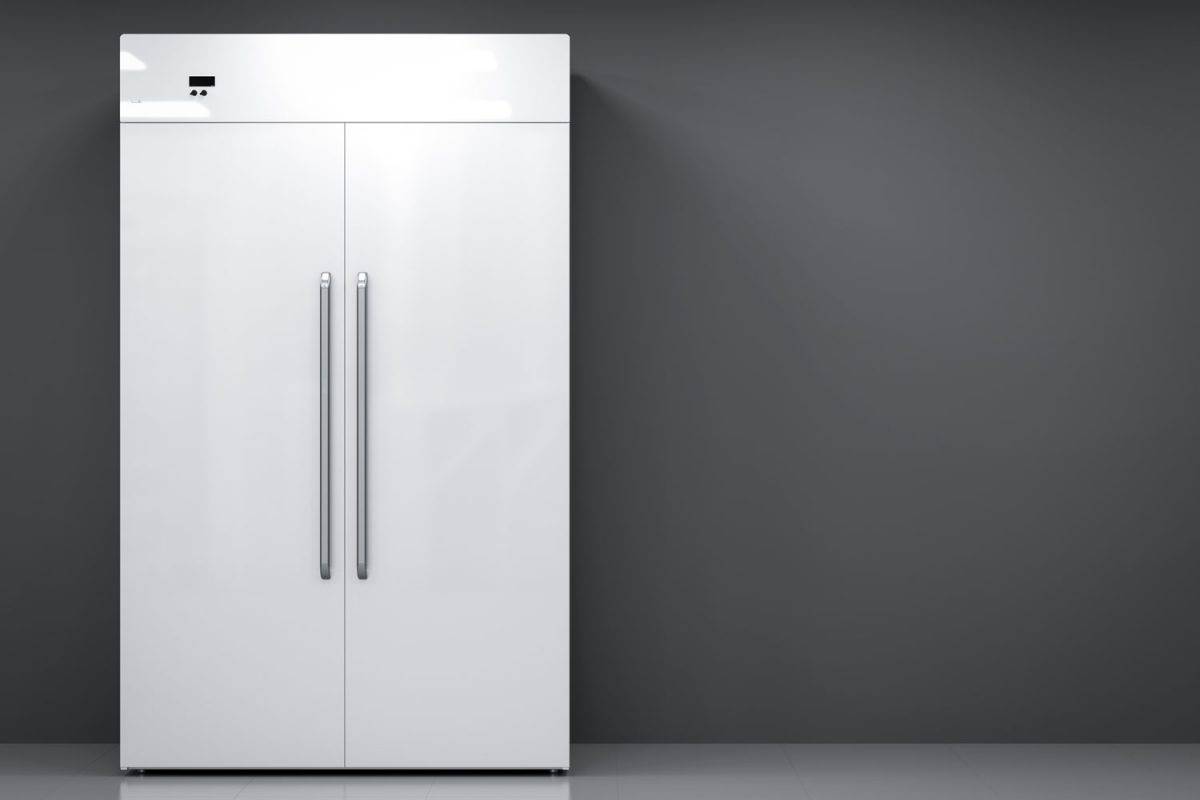
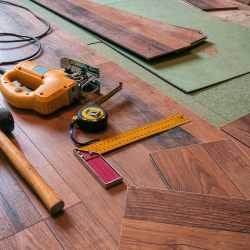
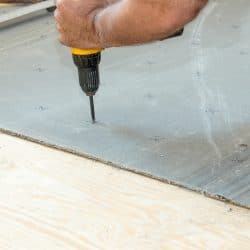


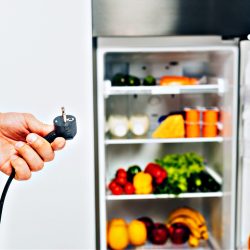
![Professional removing the cork flooring panels, How To Remove Cork Flooring From Concrete [Quickly & Easily]](https://kitchenseer.com/wp-content/uploads/2022/12/Professional-removing-the-cork-flooring-panels-250x250.jpg)